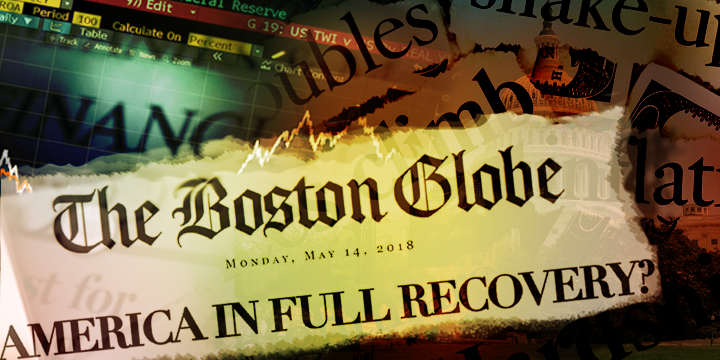
Americans Are Being Conned by Misleading Numbers
Numbers have a fascinating power. No, it’s not the numbers themselves. And it’s not the units that the numbers explicitly represent (a million dollars versus, say, a million grains of sand).
The power of numbers come from what they implicitly stand for: a kind of logic.
Logic is inherently “authoritative.” Generally, you wouldn’t want to go against it.
But there are many different “logics,” and in order for the numbers to be “true,” you must believe in that particular logic.
You must have a “bias” toward that belief system. And this is where people tend to get fooled.
The economic numbers we’ve been seeing don’t “lie,” but their underlying logic might have been switched (a sleight-of-hand trick).
Since Donald Trump entered the White House, our economic numbers have improved. The numbers paint the picture that we’re on our way to a Golden Age. And if the numbers support that view, what legitimate argument can you have against it?
But here’s the question: are we using the appropriate calculations to assess our current situation; in other words, are we using the “right” numbers or the same numbers that we’ve used in the past?
First, kudos to Trump for everything he’s done, but if we were to Make America Great Again, then “Again” in our case implies using a similar means of measuring how were once great “Before.”
Is this the case? John Williams, the economist of shadowstats.com, begs to differ.
He’s been tracking our economic numbers and comparing them with the calculations we’ve been using over the past decades.
And the numbers don’t look very pretty at all. In fact, according to Williams, they’re much worse than most think.
Let’s hear him out, starting with the unemployment rate:
Our unemployment rate is supposedly at 3.8 percent—the lowest in nearly 50 years.
That’s what we’re being told.
But here’s the truth. According to Williams, if you run the numbers “honestly,” that is, not moving people from the “officially unemployed” category to the “not in the labor force” category, then you will come up with a more accurate figure.
Our real unemployment rate is 21.5%.
This accounts for 102 million Americans of working age who do not have a job.
This unemployment rate is higher than it was during the last recession.
Our current inflation rate is 1.9% - quite low, according to the figures.
That’s a good number, overall.
As long as the number stays this low, why should you care about rising costs?
According to Williams, the way we’ve been calculating inflation differs from decades past.
He argues that US statistical agencies have overestimated GDP, underestimating the inflation deflator used in the calculations.
Why did they do this?
It allows the government to manipulate the cost of living adjustments to pay pensioners less than what they were promised.
So, what is our real inflation rate?
- Using 1990 (Bush era) calculations, our inflation rate today would be at 6%!
- Using 1980 (Carter era) calculations, our inflation rate today would be at 10%!!!
Forget what our current 1.9% number says...based on your own lived experience, based on the rising costs that you experience every day...don’t these figures seem more accurate to you?
The main point: you’ve got to question the context, calculations, and motivations behind numbers that are presented in an “authoritative” or “definitive” manner. Numbers may not lie but the context can be deceiving, even deliberately so.
So how is our “real” economy doing? It depends on which numbers you believe. But debating the numbers won’t lead you to a more or less favorable position. Instead, take some action! Stay diversified in your investments: stocks, bonds, annuities, cash, and especially gold and silver. If you “over-concentrated” your wealth in any place, you’d might as well over-concentrate in assets that have real intrinsic (non-paper) value. And only gold and silver can give you that.












